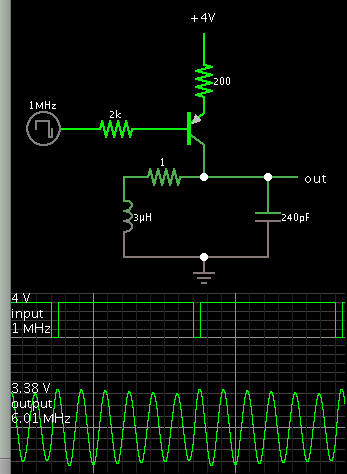Debdut
Full Member level 3
I have a rectangular voltage wave of frequency 1 MHz. I need to frequency multiply it to 6 MHz. Is it possible by injection locking?
If any other method for frequency multiplication is possible, please mention.
I thought of creating a PLL, but the control voltage of the PLL has fluctuations in time domain. So the 6 MHz output I would get through the PLL will not have exactly, 166.666ns period throughout!
If any other method for frequency multiplication is possible, please mention.
I thought of creating a PLL, but the control voltage of the PLL has fluctuations in time domain. So the 6 MHz output I would get through the PLL will not have exactly, 166.666ns period throughout!
